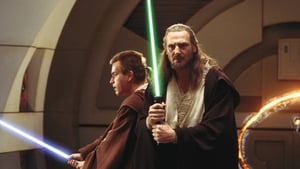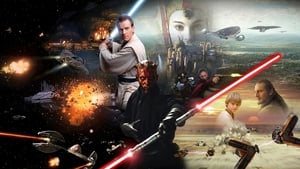スター・ウォーズ エピソード1/ファントム・メナス
作品情報
| カテゴリ | 映画 |
|---|---|
| ジャンル |
アドベンチャー
アクション
サイエンスフィクション
|
| 概要 | 遠い昔、はるかかなたの銀河系で…。銀河共和国と対立するようになった通商連合が銀河の重要な交易ルートである惑星ナブーを封鎖する事件が起き、共和国から2人のジェダイ騎士、クワイ=ガン・ジンとその弟子オビ=ワンがナブーに派遣される。命を狙われた2人は、ナブーの女王アミダラを連れて星をあとにする。やがて一行はやむをえず、砂漠の惑星タトゥイーンに到着するが、強いフォース(理力)を持つ9歳の少年アナキンと出会う。 |
| キャスト(俳優・女優・声優) |
Padmé Amidala(ナタリー・ポートマン)
Obi-Wan Kenobi(ユアン・マクレガー)
Qui-Gon Jinn(リーアム・ニーソン)
Senator Palpatine(イアン・マクダーミド)
C-3PO (voice)(アンソニー・ダニエルズ)
R2-D2(ケニー・ベイカー)
Anakin Skywalker(Jake Lloyd)
Shmi Skywalker(Pernilla August)
Yoda (voice)(フランク・オズ)
Governor Sio Bibble(Oliver Ford Davies)
Darth Maul(Ray Park)
Captain Panaka(Hugh Quarshie)
Jar Jar Binks(アーメド・ベスト)
Watto (voice)(Andy Secombe)
Captain Tarpals(Steve Speirs)
Mace Windu(サミュエル・L・ジャクソン)
Sabé(キーラ・ナイトレイ)
Wald / Pod race spectator / Mos Espa Citizen(ワーウィック・デイヴィス)
Chancellor Valorum(Terence Stamp)
Fode (voice)(Greg Proops)
Boss Nass (voice)(Brian Blessed)
Sebulba (voice)(Lewis Macleod)
Nute Gunray / Ki-Adi-Mundi / Lott Dodd / Republic Cruiser Pilot(Silas Carson)
Mas Amenda / Orn Free Taa / Oppo Rancisis / Rune Haako / Horox Ryyder / Graxol Kelvynn / Mick Reckrap(Jerome St. John Blake)
Daultay Dofine / Plo Koon / Bib Fortuna(Alan Ruscoe)
Ric Olié(Ralph Brown)
Fighter Pilot Bravo 5(セリア・イムリー)
Fighter Pilot Bravo 2(Benedict Taylor)
Fighter Pilot Bravo 3(Clarence Smith)
Palace Guard(Dominic West)
Rabé(Karol Cristina da Silva)
Eirtaé(Liz Wilson)
Yané(Candice Orwell)
Republic Cruiser Captain(Bronagh Gallagher)
TC-14(John Fensom)
Beed (voice)(Scott Capurro)
Jira(Margaret Towner)
Kitster(Dhruv Chanchani)
Seek(Oliver Walpole)
Amee(Katie Lucas)
Eeth Koth(Hassani Shapi)
Adi Gallia(Gin Clarke)
Saesee Tiin(Khan Bonfils)
Even Piell(Michaela Cottrell)
Depa Billaba(Dipika O'Neill Joti)
Yaddle(Phil Eason)
TC-14 (voice)(リンゼイ・ダンカン)
Darth Maul / Battle Droid Commander / Gungan Scout (voice)(Peter Serafinowicz)
Rune Haako (voice)(James Taylor)
Daultay Dofine (voice)(Chris Sanders)
Senator Lott Dodd / Gragra (voice)(Toby Longworth)
Aks Moe (voice)(Marc Silk)
Tey How / Diva Funquita (voice) (as Tyger)(Amanda Lucas)
Tonra(Richard Armitage)
Bystander (uncredited)(サリー・ホーキンス)
Pod Racer Mechanic (uncredited)(Paul Bannon)
Aurra Sing (uncredited)(Michonne Bourriague)
Naboo Guard (uncredited)(Douglas Bunn)
Coruscant Senate Guard (uncredited)(Sean Cronin)
Pod Race Spectator (uncredited)(Zsuzsanna Cseh)
Naboo Foot Soldier (uncredited)(Matt Daniel-Baker)
Naboo Starship Pilot (uncredited)(Philip Delancy)
Senate Guard (uncredited)(Sebastian Dewing)
Naboo Royal Guard (uncredited)(Andrew Elias)
Naboo Civilian (uncredited)(Catherine Ernster)
(uncredited)(Salo Gardner)
Naboo Citizen (uncredited)(Patrice Girod)
Naboo Fighter Pilot (uncredited)(Joss Gower)
GONK Droid (uncredited)(Raymond Griffiths)
Pod Race Spectator / Naboo Palace Guard (uncredited)(Nathan Hamill)
Ann Gella (uncredited)(Nifa Hindes)
Tann Gella (uncredited)(Nishan Hindes)
Jenn Smeel (uncredited)(Frank Huseyin)
Naboo Guard (uncredited)(Alexi Kaye Campbell)
Aqualish Alian (uncredited)(David Knight)
Sei Taria - Senators Aide (uncredited)(Kamay Lau)
Naboo Foot Soldier (uncredited)(Andrew Lawden)
Kaadu Handler (uncredited)(Dan Madsen)
Naboo Fighter Pilot (uncredited)(João Costa Menezes)
Mos Espa Citizen (uncredited)(Lorne Peterson)
Naboo Soldier (uncredited)(Andrew Raven)
Naboo Courier (uncredited)(Steve Sansweet)
Naboo Royal Guard (uncredited)(Mike Savva)
Pod race spectator (uncredited)(Jeff Shay)
Lt. Gavyn Sykes - Bravo 6 (uncredited)(Christian Simpson)
Jabba the Hutt (voice) (uncredited)(Scott Schumann)
|
| 公開日 | 1999-05-19 |
| 製作会社 |
Lucasfilm Ltd.
|
AIに聞いてみた!作品へのポイント
『スター・ウォーズ エピソード1/ファントム・メナス』のおもしろいポイントは、特殊効果を駆使した迫力ある宇宙戦闘や、新たなキャラクターであるジェダイ騎士の活躍、そして物語の中心となるアナキン・スカイウォーカーの成長過程が描かれている点です。特に、ダース・モールとの壮絶なライトセーバー戦闘シーンは見どころの一つです。
おすすめするポイントは、スター・ウォーズシリーズの中でも重要な出来事が描かれているため、シリーズ全体の理解を深めるためにも必見の作品です。また、新たなキャラクターや惑星が登場し、幅広い世界観を楽しむことができます。
この作品は、スペースオペラやファンタジーが好きな人や、スター・ウォーズシリーズ全体に興味を持っている人におすすめです。特に、ジェダイ騎士やシスの暗黒卿など、スター・ウォーズの世界観を存分に楽しみたい人にはおすすめです。
あえて挙げるなら、おすすめしないポイントは、物語のテンポがやや遅いと感じる部分があることです。また、一部のファンからは、新三部作の中でも評価が分かれる作品として知られています。そのため、スター・ウォーズ初心者には他の作品から入ることをおすすめするかもしれません。

『スター・ウォーズ エピソード1/ファントム・メナス』に関連する画像(全114件)
『スター・ウォーズ エピソード1/ファントム・メナス』に関連する動画(全1件)
この作品によく似ている映画
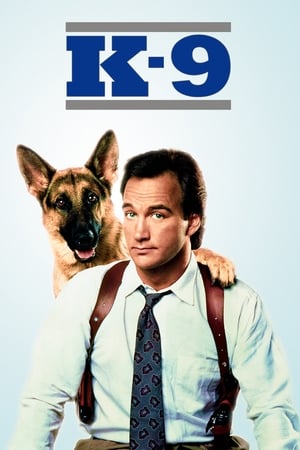
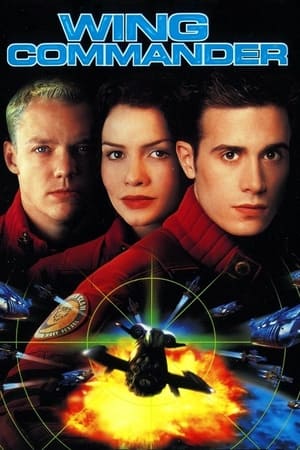
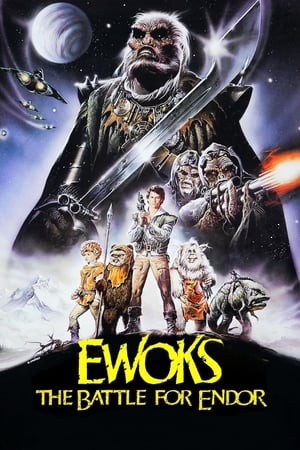
ある日イウォークの村が、テラク卿の一団に襲撃を受ける。それによりシンデルの両親と兄が死亡。イウォークたちもテラク一味に捕らえられてしまった。天涯孤独になったシンデルは親友ウィケットと共に、行く宛てもないまま村を離れることに。その途中ティークという謎の動物に招かれ、ある小屋へと導かれる2人。そこには偏屈な老人ノアが住んでいた。彼は大昔に友人サラクと共に宇宙探査に出発したが、エンドアに墜落。その後サラクは行方不明となり、1人で宇宙船を修理しながらその小屋に住んでいたのだ。

飛行艇を操る空賊が横行していた、第一次大戦後のイタリアはアドリア海。賞金稼ぎの飛行艇乗りであるポルコ・ロッソは、空賊たちには天敵の存在。自分の顔を魔法で豚に変えてしまったポルコを何とかやっつけたいと一計を案じた空賊たちは、アメリカからスゴ腕の飛行艇乗りを呼び寄せ、彼に一騎打ちを迫る。

この作品を観た人におすすめする作品
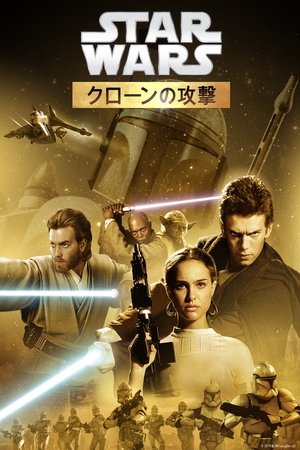
青年へと成長したアナキン・スカイウォーカーはオビ=ワン・ケノービの指導の下、フォースの力を習得し優秀なジェダイの騎士となるべく修行に励んでいた。その頃、銀河元老院では、ドゥークー伯爵の画策により、数百もの惑星が一斉に共和国からの脱退を宣言する。これにより、ジェダイだけでは銀河を統治できないと判断した元老院では、クローン軍隊の是非を問う重要な投票が行われようとしていた。この会議に出席するため惑星コルサントに向かっていたナブーの元女王アミダラは、途中で何者かに命を狙われる。オビ=ワンとアナキンはこの事件の調査のためナブーへと派遣されるのだったが…。

銀河共和国と分離主義勢力の対立が生んだクローン大戦勃発から3年後。共和国のパルパティーン最高議長が分離主義者ドゥークー伯爵に誘拐された事件を、ジェダイ騎士オビ=ワンとその弟子アナキンは解決。騎士として認められたアナキンだが、ジェダイと対立するシスのパルパティーンはフォース(理力)のダークサイド(暗黒面)にアナキンを誘い込む。同じころ、アナキンと結婚したパドメはアナキンの子どもである双子を身ごもる。

反乱同盟軍のルークとレイア姫は、悪党ジャバ・ザ・ハットに身柄を奪われた仲間のハン・ソロを奪回すると、帝国軍との決戦に備える。ルークは帝国の皇帝もいる新たな基地衛星、第2デス・スターが軌道上に浮かぶ森の惑星エンドアに潜入。住民イウォーク族を味方につけるのに成功する。だがそこへ帝国の最新兵器陣も到着。やがてルークは、かつて自分がルークの父親だと言い放った宿敵ダース・ベイダーと再会し、最後の対決に挑むのであった。

ジオノーシスの戦い以降、クローン大戦は激しさを増し銀河系の各地で激戦が繰り広げられ銀河は疲弊していた。狡猾なシスの暗黒卿、ドゥークー伯爵は、コルサント等銀河共和国の主要な惑星が集中するコア・ワールドへと続く各航路のあちこちに機雷を設置した。銀河の外縁地域(アウター・リム)はコア・ワールドから切り離され、そこで戦う共和国軍は補給が滞り苦戦していた。

デス・スター壊滅の痛手から復活した帝国軍の前に、今や雪の惑星ホスで機会をうかがうしかない反乱軍。総攻撃を前にホスを脱出したレイアやハン・ソロたちは雲の惑星ベスピンへと旅立つが、ひとりルークはフォースの訓練を積むために伝説の<ジェダイ・マスター>ヨーダの住む惑星ダゴバへと向かった。ベスピンのクラウド・シティでソロの友人ランド・カルリシアン男爵の歓待を受けるレイアたち。だがそれはダース・ベイダーの仕組んだ罠だった。
The Movie Database(TMDB)で登録されたこの作品に対するレビュー・評価
If it were the first "Star Wars" movie, "The Phantom Menace" would be hailed as a visionary breakthrough. But this is the fourth movie of the famous series, and we think we know the territory; many of the early reviews have been blase, paying lip service to the visuals and wondering why the characters aren't better developed. How quickly do we grow accustomed to wonders. I am reminded of the Isaac Asimov story "Nightfall," about the planet where the stars were visible only once in a thousand years. So awesome was the sight that it drove men mad. We who can see the stars every night glance up casually at the cosmos and then quickly down again, searching for a Dairy Queen.
"Star Wars: Episode I--The Phantom Menace," to cite its full title, is an astonishing achievement in imaginative filmmaking. If some of the characters are less than compelling, perhaps that's inevitable: This is the first story in the chronology and has to set up characters who (we already know) will become more interesting with the passage of time. Here we first see Obi-Wan Kenobi, Anakin Skywalker, Yoda and R2-D2 and C-3PO. Anakin is only a fresh-faced kid in Episode I; in IV, V and VI, he has become Darth Vader.
At the risk of offending devotees of the Force, I will say that the stories of the "Star Wars" movies have always been space operas, and that the importance of the movies comes from their energy, their sense of fun, their colorful inventions and their state-of-the-art special effects. I do not attend with the hope of gaining insights into human behavior. Unlike many movies, these are made to be looked at more than listened to, and George Lucas and his collaborators have filled "The Phantom Menace" with wonderful visuals.
There are new places here--new kinds of places. Consider the underwater cities, floating in their transparent membranes. The Senate chamber, a vast sphere with senators arrayed along the inside walls, and speakers floating on pods in the center. And other places: the cityscape with the waterfall that has a dizzying descent through space. And the other cities: one city Venetian, with canals, another looking like a hothouse version of imperial Rome, and a third that seems to have grown out of desert sands.
Set against awesome backdrops, the characters in "The Phantom Menace" inhabit a plot that is little more complex than the stories I grew up on in science-fiction magazines. The whole series sometimes feel like a cover from Thrilling Wonder Stories, come to life. The dialogue is pretty flat and straightforward, although seasoned with a little quasi-classical formality, as if the characters had read but not retained "Julius Caesar." I wish the "Star Wars" characters spoke with more elegance and wit (as Gore Vidal's Greeks and Romans do), but dialogue isn't the point, anyway: These movies are about new things to look at.
The plot details (of embargoes and blockades) tend to diminish the size of the movie's universe--to shrink it to the scale of a 19th century trade dispute. The stars themselves are little more than pinpoints on a black curtain, and "Star Wars" has not drawn inspiration from the color photographs being captured by the Hubble Telescope. The series is essentially human mythology, set in space, but not occupying it. If Stanley Kubrick gave us man humbled by the universe, Lucas gives us the universe domesticated by man. His aliens are really just humans in odd skins. For "The Phantom Menace," he introduces Jar Jar Binks, a fully realized computer-animated alien character whose physical movements seem based on afterthoughts. And Jabba the Hutt (who presides over the Podrace) has always seemed positively Dickensian to me.
Yet within the rules he has established, Lucas tells a good story. The key development in "Phantom" is the first meeting between the Jedi Knight Qui-Gon Jinn (Liam Neeson) and the young Anakin Skywalker (Jake Lloyd)--who is, the Jedi immediately senses, fated for great things. Qui-Gon meets Anakin in a store where he's seeking replacement parts for his crippled ship. Qui-Gon soon finds himself backing the young slave in a high-speed Podrace--betting his ship itself against the cost of the replacement parts. The race is one of the film's high points, as the entrants zoom between high cliff walls in a refinement of a similar race through metal canyons on a spaceship in "Star Wars." Why is Qui-Gon so confident that Anakin can win? Because he senses an unusual concentration of the Force--and perhaps because, like John the Baptist, he instinctively recognizes the one whose way he is destined to prepare. The film's shakiness on the psychological level is evident, however, in the scene where young Anakin is told he must leave his mother (Pernilla August) and follow this tall Jedi stranger. Their mutual resignation to the parting seems awfully restrained. I expected a tearful scene of parting between mother and child, but the best we get is when Anakin asks if his mother can come along, and she replies, "Son, my place is here." As a slave? The discovery and testing of Anakin supplies the film's most important action, but in a sense all the action is equally important, because it provides platforms for special-effects sequences. Sometimes our common sense undermines a sequence (for instance, when Jar Jar's people and the good guys fight a 'droid army, it becomes obvious that the droids are such bad fighters, they should be returned for a refund). But mostly I was happy to drink in the sights on the screen, in the same spirit that I might enjoy "Metropolis," "Forbidden Planet," "2001: A Space Odyssey," "Dark City" or "The Matrix." The difference is that Lucas' visuals are more fanciful and his film's energy level is more cheerful; he doesn't share the prevailing view that the future is a dark and lonely place.
What he does have, in abundance, is exhilaration. There is a sense of discovery in scene after scene of "The Phantom Menace," as he tries out new effects and ideas, and seamlessly integrates real characters and digital ones, real landscapes and imaginary places. We are standing at the threshold of a new age of epic cinema, I think, in which digital techniques mean that budgets will no longer limit the scope of scenes; filmmakers will be able to show us just about anything they can imagine.
As surely as Anakin Skywalker points the way into the future of "Star Wars," so does "The Phantom Menace" raise the curtain on this new freedom for filmmakers. And it's a lot of fun. The film has correctly been given the PG rating; it's suitable for younger viewers and doesn't depend on violence for its effects. As for the bad rap about the characters--hey, I've seen space operas that put their emphasis on human personalities and relationships. They're called "Star Trek" movies. Give me transparent underwater cities and vast hollow senatorial spheres any day.
3.5/4
-Rodger Ebert
Frankly, this film is terrible, and the producers were obviously banking on the original Star Wars coming back all excited, and didn't bother come up with a good story.
What's wrong? Well --
(1) The virtuous Obiwan Kenobi talks an admiring young boy to participate in a dangerous race so that he can bet on the boy and win the money he needs for his mission. Sounds like the later movie HUNGER GAMES, except that in HUNGER GAMES we're expected to despise people who bet on children's lives.
(2) The young boy befriends a teenage girl who is presumably 6 or 7 years older. Come the next movie, they're suddenly the same age so that they can have a love affair. Are they of different species that age at different rates, or did the writers simply not plan ahead?
(3) The boy's mother tells Obiwan that she gave birth to the boy without having sex. Having introduced this bizarre Christological symbolism, the writers promptly forget it.
(4) And there's a character named JarJar, who apparently has no function in the movie except to irritate a lot of the critics.
***Solid return of the franchise after 16 years, highlighted by Liam Neeson***
A Jedi Knight & his apprentice (Liam Neeson and Ewan McGregor) escape a blockade with their new Gungan friend, Jar Jar Binks, and the handmaiden of Queen Amidala (Natalie Portman). Upon damaging their vessel, they find sanctuary on a planet where they meet a slave boy, a gifted pilot and engineer, who may be the prophesied “Chosen One.” Meanwhile, the supposedly extinct Sith resurface, including Darth Maul (Ray Park).
"Star Wars: Episode 1 – The Phantom Menace" (1999) is the fourth Star Wars film and the first of the prequel trilogy, followed by “Attack of the Clones” (2002) and “Return of the Sith” (2005). It marked writer/director George Lucas’ return to the popular franchise after 16 years, the previous film being “Return of the Jedi” (1983).
Star Wars is fantasy packaged as science-fiction or “space fantasy” whereas Star Trek is dramatic science-fiction in a space-travel context. I’ve always preferred the latter because it’s more adult-oriented, but I don’t mind a Star Wars flick now and then and “The Phantom Menace” is entertaining enough.
There’s a new cast of characters along with a young version of Obi-Wan Kenobi and R2D2, C-3PO, Yoda and Jabba. Liam Neeson stands tall as the no-nonsense Qui-Gon Jinn, McGregor is solid and Portman is attractive at the young age of 17. Also notable is Hugh Quarshie as Captain Panaka.
I didn’t mind the loathed Jar Jar Binks and I enjoyed the wondrous underwater sequence and the thrilling podrace in the first half (even though the mother allowing her son to enter the life-and-death contest is unlikely, not to mention the Jedi knights condoning it). Unfortunately the climax comes down to the clichéd “big battle sequence” and it’s predictable who’s gonna die in the corresponding duel. Yawn. Still, “The Phantom Menace” is all-around entertaining if you have a taste for Star Wars.
The film runs 2 hours, 16 minutes.
GRADE: B-/B
This is a terrible, terrible movie. I'm amazed that A) Lucas made a film like this, knowing how beloved the franchise was, and B) that the franchise remained so beloved after this had come out... It introduced Maul though, who is my favourite _Star Wars_ character. So points on that one.
_Final rating:★★ - Had some things that appeal to me, but a poor finished product._
A huge drop off the original trilogy. I still like it, mind.
I do have split feelings about <em>'Star Wars: Episode I – The Phantom Menace'</em> though. One positive is the casting, which is well done.
Liam Neeson and Ewan McGregor are strong choices to enter the franchise, I enjoyed both of them. Jake Lloyd does a fine job in his role, while the likes of Terence Stamp, Samuel L. Jackson and Keira Knightley also feature. Natalie Portman appears too, but I honestly never really cared for her lot's side of the story. Ahmed Best, meanwhile, is very hit-and-miss as Jar Jar Binks.
Speaking of Binks, the CGI is rather iffy in this fourth installment of <em>'Star Wars'</em>. Of course it did come out in 1999, but other films from that era and beyond have aged better in these terms. The score is, at least, more than up to scratch.
Overall, I'm OK with this but it most definitely should've been far greater. Some scenes do go on for too long, while I did find a lack of a serious threat for the first chunk of the film. Darth Maul looks the part, but ends up being rather forgettable.
I can see how diehard fans of the series could be disappointed by this.
So I watched this at a midnight screening when it was released (the first time midnight screenings happened...).
The blast of horns for John Willams' score occurred and the title scrawl happened, droidikas appeared - I had a buzz going.
But that buzz got less and less as the film wore on. Jar Jar appeared...and then Anakin trying to crack onto Padme...Darth Maul appeared and I got excited, but the dialogue continued like a child had written it and the excitement had dissipated by the time the Pod Race started.
It was the first time I had really been deeply disappointed by a movie.
The came the Lego Star Wars games...and this movie became alright. Probably because Lucas had made this film for kids (hence the overly simple plot and dialogue), is why it worked so well with Lego characters miming scenes.
I have watched this now countless times as a part of the 4-6, 1-3 order of Vader being a villain, redeeming himself and then becoming a villain. And my appreciation of it has grown a little.
The CGI for the time was great - it has become old though; and the movie relies on this too much, so some scenes do not feel grounded (or have people looking into space rather than at a character).
Im now OK with the pod race as a homage to Ben Hur - the details that have been thrown into it are grand, and it is a good length for the film.
And I really like that Lucas tried to expand what goes on in this universe. He started the world building quite well, but this meant A LOT of exposition to catch people up on how things are different to 4-6. I dont mind that, there was a lot of exposition in 4 as well.
And as always, Lucas put in details that you didnt expect, like Yoda's comments to ObiWan that he could see QuiGon in him, or the spinning parts in C3PO, or R2's introduction and his quippy nature from the start. Setting part of the film on Tatooine is actually smart (Anakin hates it, so Vader wouldnt go searching there between 3-4). And having a planet that is not just a desert, or show, or a forest, or lava, or a city, but that is like Earth is refreshing in this series. I dont even mind the Midichlorian comcept - why wouldnt an advanced society try to find out how "magic" happens and find a way to test for it?
But you can also see the things where Lucas just tried toooo hard- they stand out like nothing else. And here are the usual topics for this film - JarJar, having to go to Atlantis (you could take both of these things out and the plot and character development wouldnt change at all), the under-developed plot and dialogue, Anakin being "bratty". The Pod Race also feels kind of superfluous - written into the plot as Lucas wanted to "homage."
And Ill give it credit for actually trying to do something and expand the universe (unlike the dreadful Ep 7, but thats another story). There are consequences in this universe and foreshadowing of some things to come. we got to see how the Jedi worked in their prime (and moreso in Ep 2).
As movies go, this one is really mixed. But it is a great computer game.
MORE REVIEWS @ https://www.msbreviews.com/
Rewatching it before OBI-WAN KENOBI.
Even ignoring the lack of narrative impact of THE PHANTOM MENACE in Luke Skywalker's journey, it still doesn't work for me. The climactic lightsaber fight and the podracing are cool, but the terrible dialogue, awful editing, Jar Jar, and the f****** midi-chlorians ruin the whole thing.
I'm not as annoyed by Anakin as others, though. Nor Padmé, I actually like her character. However, when most of the script consists of extremely boring political meetings or scenes with an overreliance on - now dated - CGI, most performances feel the same: emotionless.
John Williams' score is THE big plus. "Duel of the Fates" is going to be remembered forever. It genuinely saves the movie from being an absolute disaster, to be honest. If not for the poor editing choices, the final act would have been much, much better.
Rating: D+
Hmmm. I watched this again recently hoping that it wasn't as mediocre as I had thought first time around. Sadly, not. The opening scenes are great: a good fight with lots of action and lightsabres; then it descends into a sort of cross between "Ben Hur" and "The Golden Child" with some pantomime thrown in too. The film is clearly designed to be part one of another trilogy and as such spends way too much of it's time setting the scenes and establishing the characters for the films to follow. We do start to get a sense of the evil "Palpatine" and it looks spectacular, but it is basically pretty empty and soulless with a very weak storyline.
この作品に対するレビュー・評価
「スター・ウォーズ エピソード1/ファントム・メナス」のおもしろいポイントは、まずは新たなキャラクターの導入です。特に、フォースを強く持つ少年アナキン・スカイウォーカーの登場はシリーズ全体の重要な要素となります。彼の運命や成長がどのように描かれるのか、注目が集まります。
また、ジェダイ騎士のクワイ=ガン・ジンやオビ=ワン・ケノービなど、新たなジェダイの活躍も見どころの一つです。彼らのフォースの使い方や戦闘シーンはスリリングで、ファンにとっては見逃せない要素となっています。
さらに、惑星ナブーの美しい景観や宇宙船のデザインなど、映像の美しさも際立っています。特に、レーサー・シーンやライトセーバーの戦いなど、アクションシーンも見応えがあります。
そして、物語の中には政治的な陰謀や駆け引きも描かれており、銀河共和国の内部情勢や権力闘争にも注目が集まります。
総じて、「ファントム・メナス」は新たなキャラクターや世界観の導入、スリリングなアクション、美しい映像、そして政治的な要素が絡み合った魅力的な作品と言えます。

















